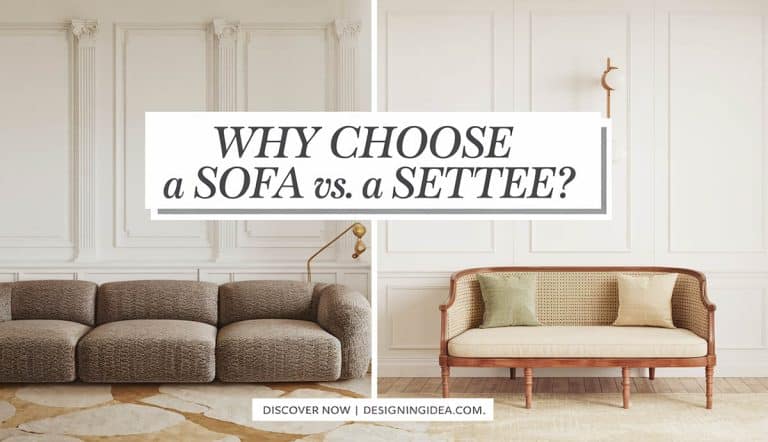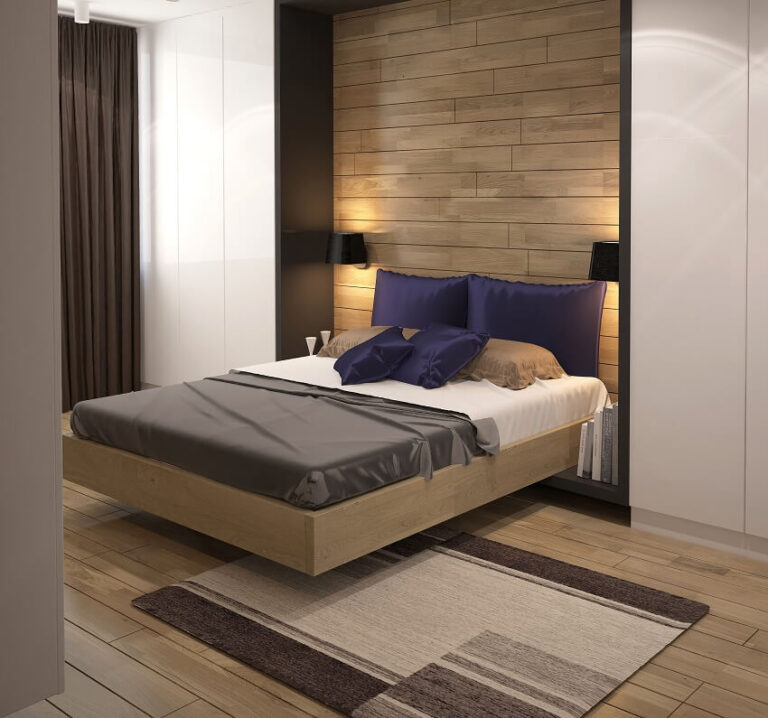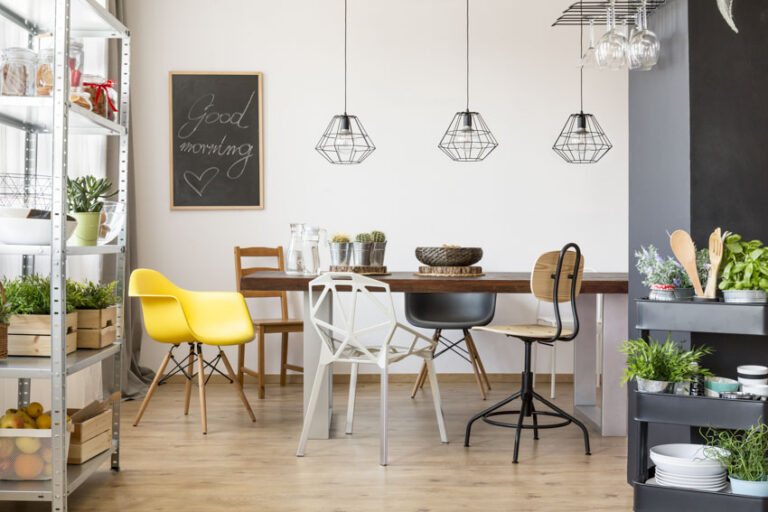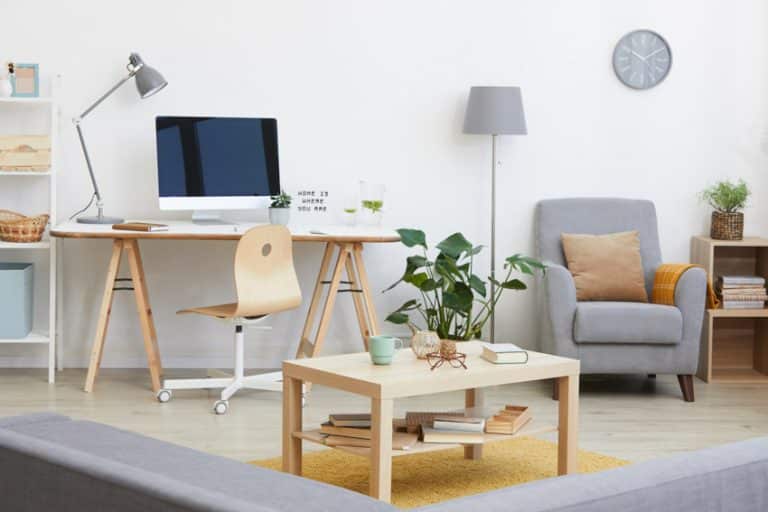Standard Shuffleboard Dimensions And Space Needed
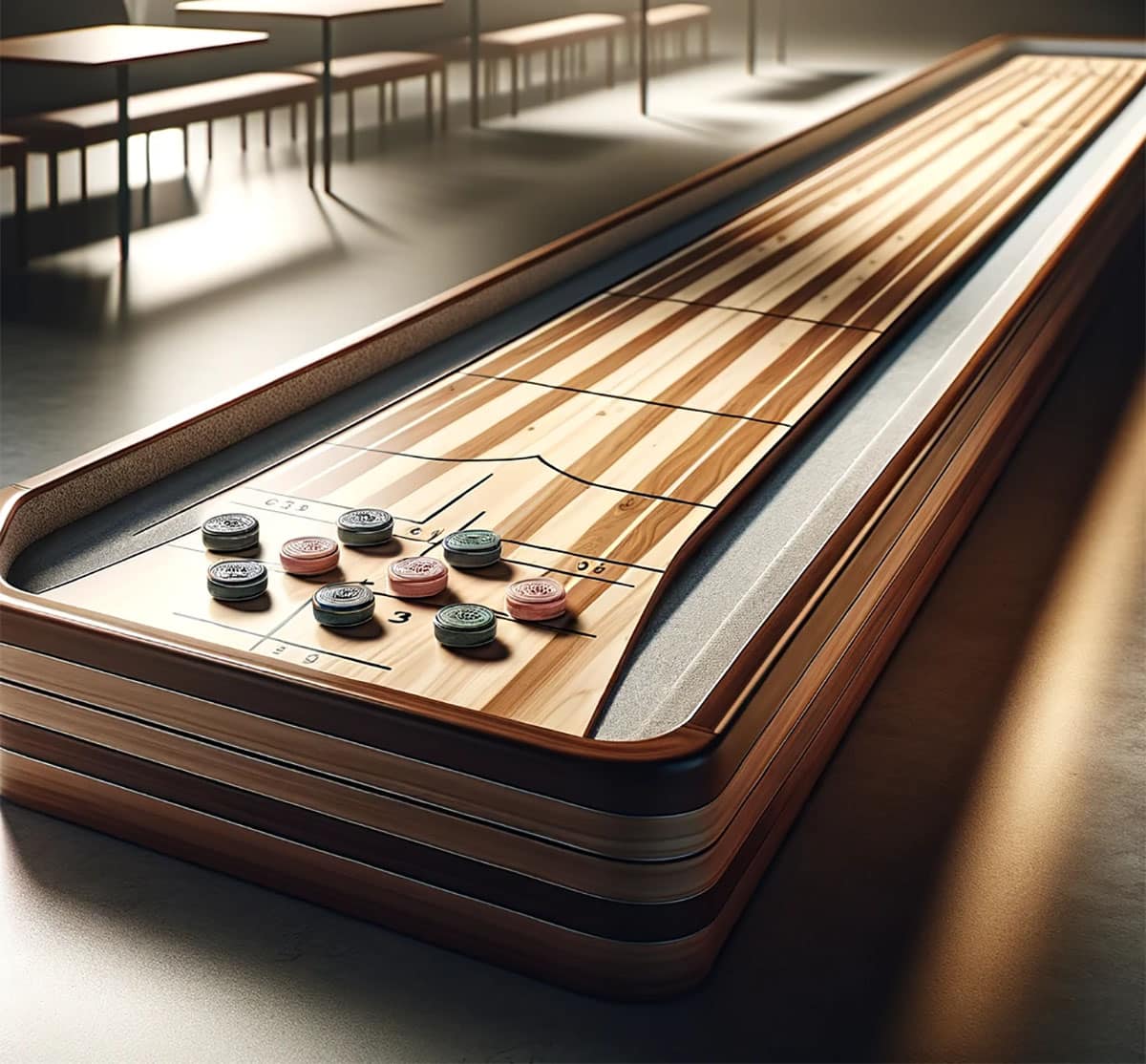
One of King Henry VIII’s favorite pastime – the “shouvillabourde” – is making a huge comeback after a meteoric, albeit brief, rise to fame in the early 20th century. Today, youngsters find the game more entertaining than Mobile Legends, while the oldies love shuffleboard’s uncanny strategic complexity and low impact on the aging body. Shuffleboards can create a party atmosphere for the home, with family members and visitors taking turns pushing the puck and scoring. You’ll want to know shuffleboard dimensions to determine whether you can fit this game in your property. And that’s just what this article provides.
Standard Shuffleboard Table Size
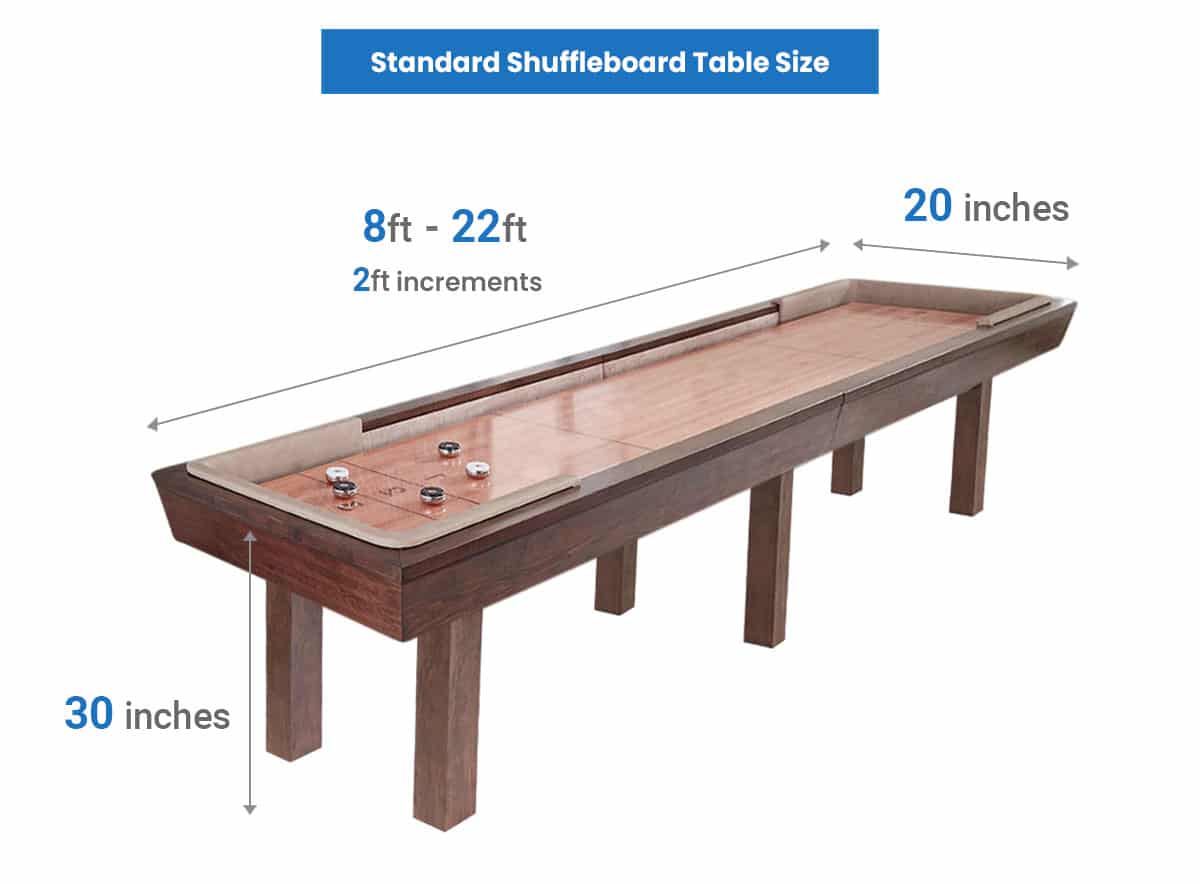
Of course, you can opt for a smaller (or bigger) SB table, depending on room space availability. After all, shuffleboards range from as short as 8 feet (about 2.4 meters) to as extensive as 22 feet (6.7 meters). You can find other sizes in 2-feet increments (i.e., 12, 14, 16, 18, and 20 feet), although some brands might offer a 9-foot oddball.
Shuffleboard Table Height
Unlike the pastime of wealthy 15th- to 17th-century English played on the ground, SB tables have an elevated playing surface. After all, it’s a “table.” Hence, 30 inches separate the shuffleboard’s playing surface from the floor underneath the fixture.
This height should be sufficient for most players, although kids might require a footrest or chair opposite the player area to reach the puck and slide it across the table. Alternatively, custom-built SB tables are available to accommodate “personal size requirements.”
Regulation Size Shuffleboard

Regulation-size shuffleboards are perfect for competitions or professional tournaments, including those sanctioned by the International Shuffleboard Association.
It’s worth pointing out that regulation or competition boards differs from the table SB people play at home or at pubs. Known as “floor shuffleboard,” regulation SB venerates the game’s history. Hence, the playing area is more massive.
The tournament shuffleboard reaches 39 feet end-to-end and 6 feet side-to-side (about 12 meters long and 1.8 meters wide). The scoring zone is also more challenging than the home or commercial-type SB table, forming an isosceles triangle with the apex worth 10 points and the base only 7.
Of course, clubs (i.e., St. Petersburg Shuffleboard Club) might sponsor a tournament for table SB. In such competitions, the regulation fixture should be like the “standard” full-size table (22 feet by 20 inches).
Bar Shuffleboard Dimensions

A standard 22 feet by 20-inch table should be sufficient to give bar patrons a thrilling game. Otherwise, the establishment could opt for a medium-sized shuffleboard table between 14 and 20 feet (about 4.3 and 6 meters). Smaller versions (i.e., 8 to 12 feet or 2.4 to 3.6 meters) are preferable for cramped pubs and bars.
How Much Does a Shuffleboard Weigh?
Most SB tables feature maple wood to improve its warp resistance over time. Excellent alternatives are Canadian soft maple and Russian birch, while Chinese birch and poplar are popular options for owners on a budget.
Regardless of material, shuffleboards are hefty. These fixtures have a box or frame accommodating the playing surface and several feet or legs to support the massive platform.
SB table heft ranges from 600 to 1400 pounds or about 272 to 635 kilograms. Obviously, size is a crucial factor in their weight. The longer the SB table, the heftier it is (it has more wood material, increasing its heft substantially).
Hence, small 9-foot table can tip the scale at 600 pounds (272 kilograms), while a 12-foot version can weigh 150 pounds (68 kilograms) more. Adding 2 feet to the 12-foot table will bump its heft to 900 pounds (408 kilograms).
Meanwhile, 16-foot tables can be as heavy as 1050 pounds (476 kilograms), which is about a hundred pounds (45 kilograms) lighter than the next-in-size SB table (18 feet). A 20-foot version tops the chart at 1300 pounds (590 kilograms), while a full-sized 22-foot competition-ready table bears 1400 pounds (635 kilograms).
How Much Space Do You Need for a Shuffleboard?
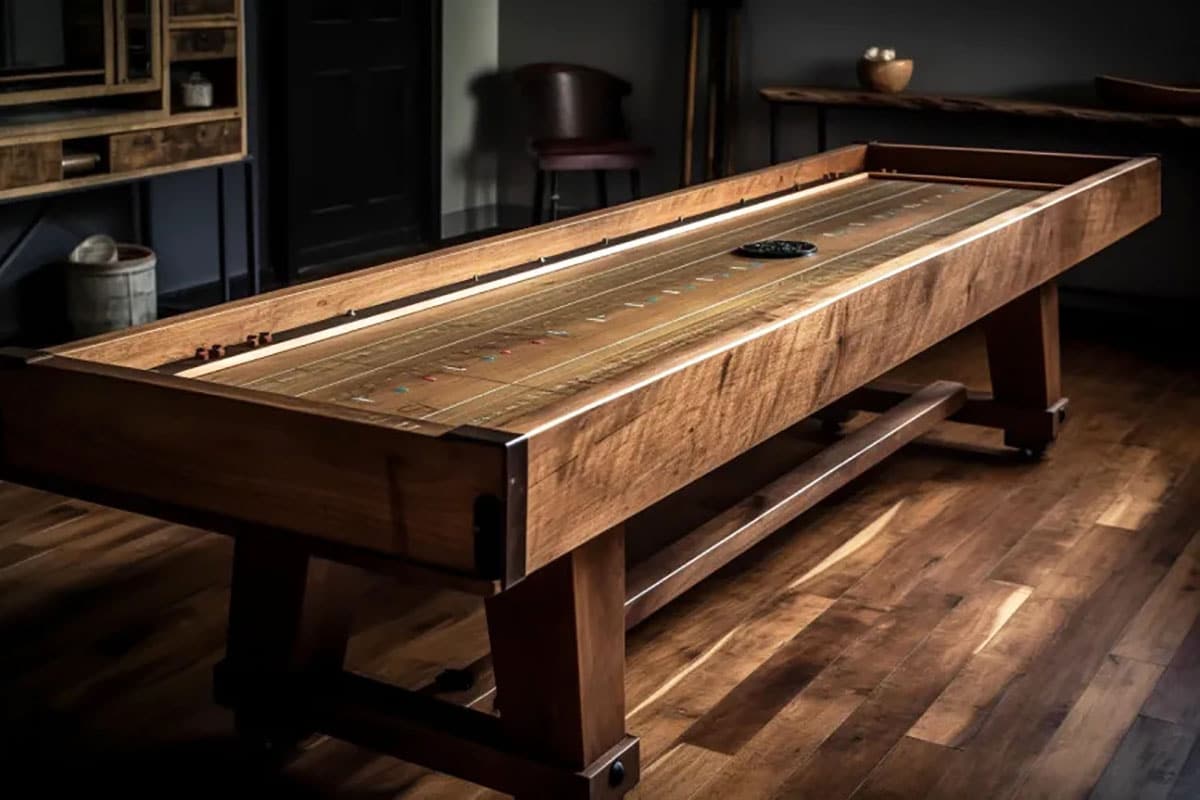
A shuffleboard (SB) table is always a great addition to a game-room or man-cave. Unfortunately, the size depends on several factors, including room clearances from breakable items (i.e., glass objects and windows). You will also want to consider spectators – how many folks will be watching and cheering as you and friends take turns trying to get the highest score.
Elbow room matters, too. After all, you don’t want to interfere with a player’s movement and concentration, sliding the puck to the highest score zone.
Game experts recommend allocating at least 2 feet of space allowance on the SB table’s all sides. This area should be free of obstruction and fragile objects.
For example, suppose you have a full-size 22-foot by 20-inch table. Your obstruction-free space should be at least 26 by 6 feet or 156 square feet (about 7.9 x 1.8 meters or 14.2 square meters).
What is the Difference between A Deck Shuffleboard and Standard Types?
Contrary to some people’s perceptions, deck shuffleboard isn’t different from a conventional model. The game mechanics and playing area characteristics remain the same. However, enthusiasts consider the deck version an “outdoor” activity, while table and bar SBs are indoors.
Deck shuffleboard grew out of necessity. It resulted from ship passengers wanting to “kill” boredom during extended voyages. So, they drew “instant” shuffleboards on the passenger liner’s “deck” and played with fellow passengers. This type could be as old as two centuries (reports say people played the game aboard ships in the 1830s).
Visit our ping pong table dimensions for more related content.


